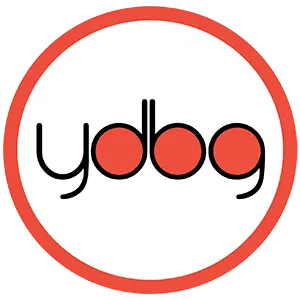At first glance, independence looks like the goal.
You’re self-sufficient. You handle your business. You don’t rely on anyone. People come to you for answers, not the other way around. But beneath that curated strength, many people are quietly drowning in a pattern that’s more isolating than empowering.
It’s called hyper-independence, and while it wears the mask of confidence, it’s often rooted in fear, trauma, and deep mistrust.
At YourDay Balance Game (YDBG), we’ve coached thousands of high-functioning individuals through this exact struggle. Our certified coaching team teaches a core truth: Not all independence is created equal. There’s a profound difference between True Independence—which is principle-centered, integrated, and expansive—and hyper-independence, which is fear-centered, reactive, and energetically expensive.
If you’ve ever felt the tension between needing support but refusing to ask, or if “I’m fine” has become your default response, even when you’re far from it, this article is for you.
What Is Hyper-Independence, Really?
Hyper-independence is more than just being capable or self-reliant. It’s a trauma response—often stemming from environments where trust was broken or support felt unsafe.
“When a person has experienced repeated disappointment or neglect in close relationships, they may internalize the belief that relying on others is dangerous or pointless,” explains Dr. Thema Bryant, licensed psychologist and current president of the American Psychological Association.
This pattern is also rooted in attachment theory, where individuals with avoidant attachment styles tend to downplay emotional needs and rely exclusively on themselves to maintain a sense of safety. According to research by Mikulincer and Shaver (Attachment in Adulthood, 2007), avoidantly attached individuals suppress emotional expression to avoid perceived threats in intimacy.
Other credible sources affirm this as well. A 2020 study published in BMC Psychology found that emotional neglect and inconsistent caregiving in early life significantly predicted avoidant and dismissive behaviors in adulthood, including an over-reliance on the self (source).
Hyper-independence often leads to:
- Chronic burnout
- Isolation or emotional disconnection
- Difficulty forming secure, reciprocal relationships
- An inability to receive support without guilt or shame
True Independence: A Different Game Entirely
True Independence doesn’t reject connection—it integrates it.
At YDBG, we define True Independence as a lifestyle built on principle, not protection. It’s about making choices that reflect trust, alignment, and integrity—not fear or obligation. It’s not doing everything yourself out of habit. It’s knowing you could—and choosing collaboration anyway.
This includes:
- Emotional honesty, even when it feels vulnerable
- Asking for support from self-worth, not self-doubt
- Holding boundaries from clarity, not resentment
- Living from your center—not your defenses
Coach Sarah Bivens, a certified Conscious Leadership and YDBG lifestyle coach, shares,
“The most common breakthrough I see in clients is when they realize they’re not actually independent—they’re just scared. And that fear has been driving every decision under the surface.”
One such client, Amanda—a high-performing executive and mother of two—shared this with us:
“I used to pride myself on doing it all alone. But I was exhausted, short-fused, and quietly angry. Through the Balance Chart and Trust App, I learned that I wasn’t independent—I was isolated. I now ask for help without guilt, and it’s changed how I parent, how I partner, and how I breathe.”
The Core Distinction: Value-Centered vs. Principle-Centered
One of the most transformative frameworks we teach is the difference between being value-centered and being principle-centered.
When you’re value-centered, your worth is determined by what you do and how you’re perceived. Independence, in this case, is rooted in fear—fear of being judged, fear of being let down, or fear of not being enough unless you’re constantly performing.
This sounds like:
- “If I ask for help, I’ll owe someone.”
- “No one’s coming anyway, so I’ll just do it myself.”
- “If I rest, I’ll fall behind.”
By contrast, principle-centered living is rooted in timeless, universal truths—love, feedback, accountability, trust. It shifts your motivation from proving to becoming.
Inside the Trust App, clients track these shifts using the Balance Chart, a gamified health and habit tracker based on the 7 BALANCE categories (Breath, Aqueous, Lengthen, Anaerobic, Nutrition, Cleanse, Energize). Each deposit reinforces self-trust—measurable progress, not emotional guesswork.
The Possibility Triangle: Rewiring from the Inside Out
The transition from hyper-independence to True Independence requires more than insight—it needs practice. That’s where the Possibility Triangle comes in.
This proprietary YDBG tool aligns you to three core principles:
- Faith in Yourself – Reclaiming your worth outside of performance
- Trust in the Process – Honoring growth rhythms instead of rushing them
- Surrender to Feedback – Receiving truth without shame
Each corner of the triangle helps reveal where your operating system still runs on fear. When integrated, this framework transforms how you relate to support, self-worth, and long-term transformation.
Try This Reflection Prompt
Use this in your journal—or log it as a milestone in your Trust App:
“Where in my life am I performing strength to avoid feeling vulnerable—and what might shift if I trusted that I am safe to receive?”
Sometimes the strongest move isn’t pushing forward. It’s pausing and opening up.
Conclusion: Real Strength Isn’t What You Hold—It’s What You Let Go Of
Hyper-independence may have kept you safe once, but it cannot take you where you want to go.
True Independence is not about needing no one—it’s about being so connected to your center that you can discern when to lead, when to rest, and when to receive.
At YDBG, we don’t offer abstract advice. We offer principle-centered tools—like the Trust App, the Possibility Triangle, and the Balance Chart—that make growth measurable, embodied, and sustainable.
So ask yourself:
Are you still proving your strength by going it alone?
Or are you ready to live from your principle—not your programming?
Disclaimer
This article is for educational and informational purposes only and is not a substitute for mental health treatment or clinical therapy. If you are experiencing symptoms of trauma, anxiety, or depression, please consult with a licensed mental health professional.







